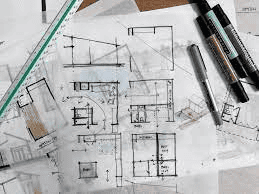Streamlining design processes is the first step in achieving architectural productivity. Adopting efficient workflows, and using appropriate software and tools to increase productivity is key. By using computer-aided (CAD) design software, architects are able to create, modify and visualise designs in a more effective manner, saving time and effort. Building Information Modelling platforms (BIM) allow for collaborative design, data integration and multiple stakeholders working simultaneously on a project. This reduces errors and enhances coordination.

Rapid technological advancements have revolutionised architecture, providing architects with a variety of tools and resources that can boost productivity. Virtual Reality (VR), and Augmented Reality technologies (AR), have become powerful tools for the design process. Architects are able to create immersive virtual environments for exploring and visualising designs. This allows them to make real-time changes and improvements. These technologies facilitate communication between architects and clients and contractors. This leads to better decisions and faster approvals of projects. For information on a Monmouth Architect, contact Hills & Co, a leading Monmouth Architect firm.
Artificial intelligence (AI), machine learning algorithms, and other technologies are changing the way architects design. These technologies are able to analyse large amounts of data and identify patterns. They can also generate design alternatives. This allows architects to explore many possibilities. AI-powered tools automate repetitive tasks such as creating floor plans and optimising building performance. This allows architects to spend more time on creative design challenges.

Communication and collaboration are key to the productivity of architects. To ensure a successful project, architects must work closely together with clients, consultants and construction teams. Cloud-based collaboration and project management platforms offer a central location for document sharing, task coordination, and progress tracking. These platforms allow for real-time collaboration and enable stakeholders to give feedback, make changes, and resolve issues quickly.
